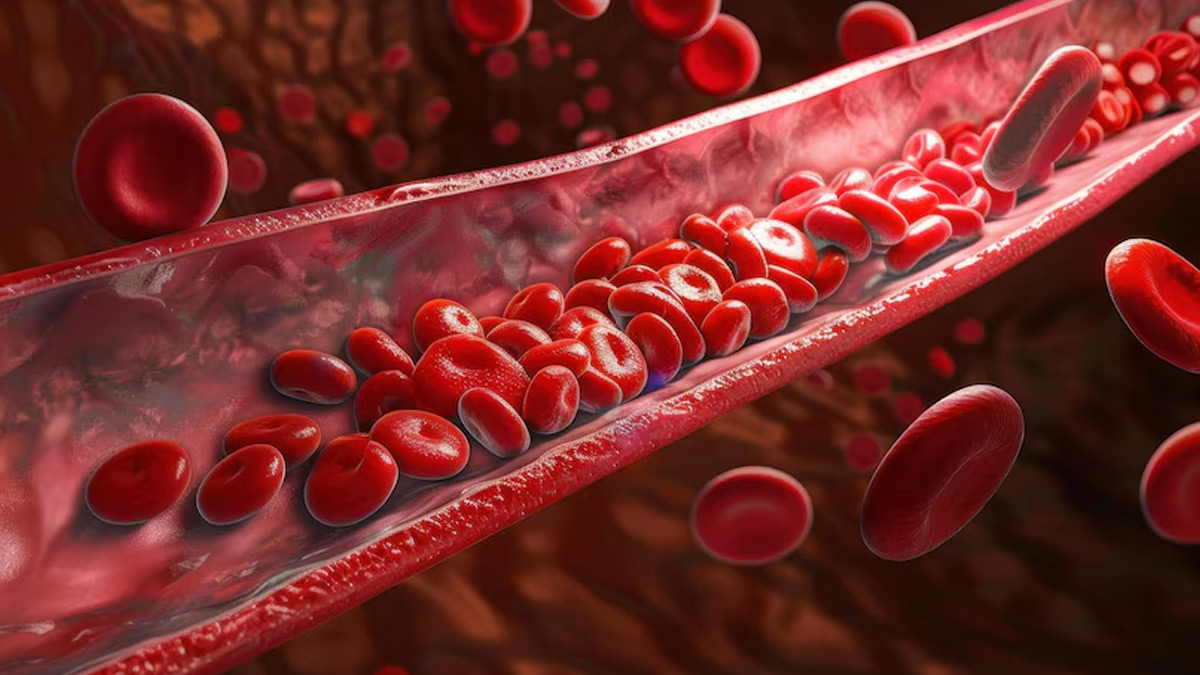
A consistently high haemoglobin level, medically known as polycythemia, can lead to serious health issues if not managed. This condition, marked by an unusually elevated number of red blood cells, results in thicker blood, which increases the risk of blood clots, heart attacks, and strokes.
Table of Content:-
To understand what happens when haemoglobin is high, OnlyMyHealth team interacted with Dr Roohi Pirzada, MBBS, Consultant Physician, Mumbai.
According to Dr Roohi Pirzada, an expert in internal medicine, “High haemoglobin is often an indicator that your body is trying to compensate for low oxygen levels in the blood. While a temporary increase may not be alarming, sustained high levels can signal underlying health conditions.”
Causes of High Haemoglobin Levels
Polycythemia can develop due to a range of factors. High-altitude living, where oxygen levels are lower, prompts the body to produce more red blood cells to capture available oxygen, which can increase haemoglobin. Smoking is another common cause, as it introduces carbon monoxide into the blood, lowering oxygen levels and causing the body to respond with more red blood cell production.
Some medical conditions, such as bone marrow diseases, renal disorders, and certain gastrointestinal issues like gastric ulcers or polyps, can also contribute to consistently high haemoglobin. Dr Pirzada notes, “In some cases, dehydration can falsely elevate haemoglobin levels because it reduces plasma volume, making the concentration of red blood cells appear higher than it actually is.”
Symptoms of Polycythemia

Polycythemia’s symptoms are often vague, making it hard to diagnose without specific blood tests. Individuals may experience fatigue, dizziness, and general weakness. Other symptoms include blurred vision, ringing in the ears (tinnitus), and occasional headaches. These nonspecific signs are often misattributed to other conditions, so awareness of symptoms and potential underlying causes is crucial.
Hypoxia, or low oxygen levels in the blood, is a primary driver of high haemoglobin. Dr Pirzada explains, “When oxygen levels are low for an extended period, the body tries to compensate by producing more red blood cells, thus increasing haemoglobin levels.” Chronic hypoxia, particularly due to smoking or long-term exposure to high altitudes, can perpetuate polycythemia if left unaddressed.
For some, polycythemia may also cause unexpected weight loss, jaundice, or the yellowing of skin and eyes (scleral discoloration), hinting at a liver involvement or a more systemic issue.
Risks Associated with High Haemoglobin
The thickened blood from polycythemia increases the risk of severe complications, including blood clots, which can result in deep vein thrombosis (DVT) and pulmonary embolisms. There’s also an increased chance of heart attacks or strokes due to obstructed blood flow. Dr Pirzada stresses that “polycythemia’s impact on blood flow should not be underestimated. When blood becomes thick, it slows down circulation, putting added strain on the heart and blood vessels.”
Also read: How Does Kidney Disease Cause Anaemia? Tips To Restore Haemoglobin Level
Treatment for High Haemoglobin Levels

Treatment for polycythemia generally focuses on reducing the haemoglobin concentration in the blood. A common and effective approach is phlebotomy, a procedure where blood is removed from the body at regular intervals to decrease red blood cell count. This process is somewhat similar to donating blood and helps reduce the thickness of the blood, thus alleviating the risk of clotting and other complications.
Additional treatments may be prescribed depending on the cause. For instance, those who smoke may need to quit to prevent further oxygen deprivation. Similarly, individuals at high altitudes may consider lifestyle changes or oxygen supplementation, especially if they experience symptoms frequently.
Prevention
Preventing high haemoglobin levels hinges on addressing the underlying causes. Regular check-ups, especially if you’re at risk, can help detect polycythemia early and mitigate its effects. Dr Pirzada advises, "Staying aware of your body’s oxygen levels and taking action against lifestyle factors like smoking can help keep haemoglobin levels within a safe range.”
Conclusion
Consistently high haemoglobin can have serious health implications, and early diagnosis is crucial for effective management. If you experience symptoms or have risk factors like smoking or high-altitude living, consult a healthcare provider. They can guide you in reducing your haemoglobin levels and protecting your overall cardiovascular health.
Also watch this video
How we keep this article up to date:
We work with experts and keep a close eye on the latest in health and wellness. Whenever there is a new research or helpful information, we update our articles with accurate and useful advice.
Current Version